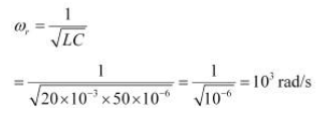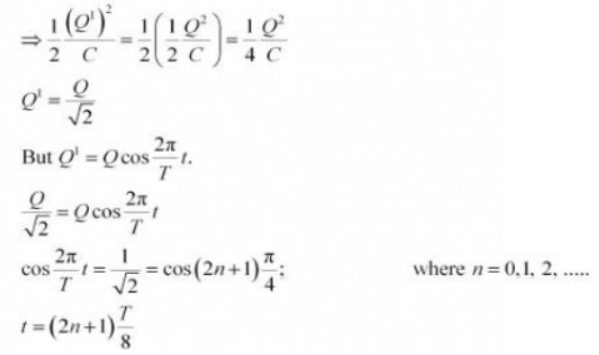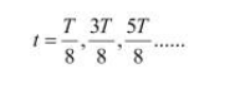Inductance of the inductor, L = 20 mH = 20 × 10−3 H
Capacitance of the capacitor, C = 50 μF = 50 × 10−6 F
Initial charge on the capacitor, Q = 10 mC = 10 × 10−3 C
(a) Total energy stored initially in the circuit is given as:

Hence, the total energy stored in the LC circuit will be conserved because there is no resistor connected in the circuit.
(b)Natural frequency of the circuit is given by the relation,

Natural angular frequency,

Hence, the natural frequency of the circuit is 103 rad/s.
(c) (i) For time period (T ), total charge on the capacitor at time t,
), total charge on the capacitor at time t, 
For energy stored is electrical, we can write Q’ = Q.
Hence, it can be inferred that the energy stored in the capacitor is completely electrical at time, t =
(ii) Magnetic energy is the maximum when electrical energy, Q′ is equal to 0.
Hence, it can be inferred that the energy stored in the capacitor is completely magnetic at time, 
(d) Q1 = Charge on the capacitor when total energy is equally shared between the capacitor and the inductor at time t.
When total energy is equally shared between the inductor and capacitor, the energy stored in the capacitor =  (maximum energy).
(maximum energy).

Hence, total energy is equally shared between the inductor and the capacity at time, 
(e) If a resistor is inserted in the circuit, then total initial energy is dissipated as heat energy in the circuit. The resistance damps out the LC oscillation.











